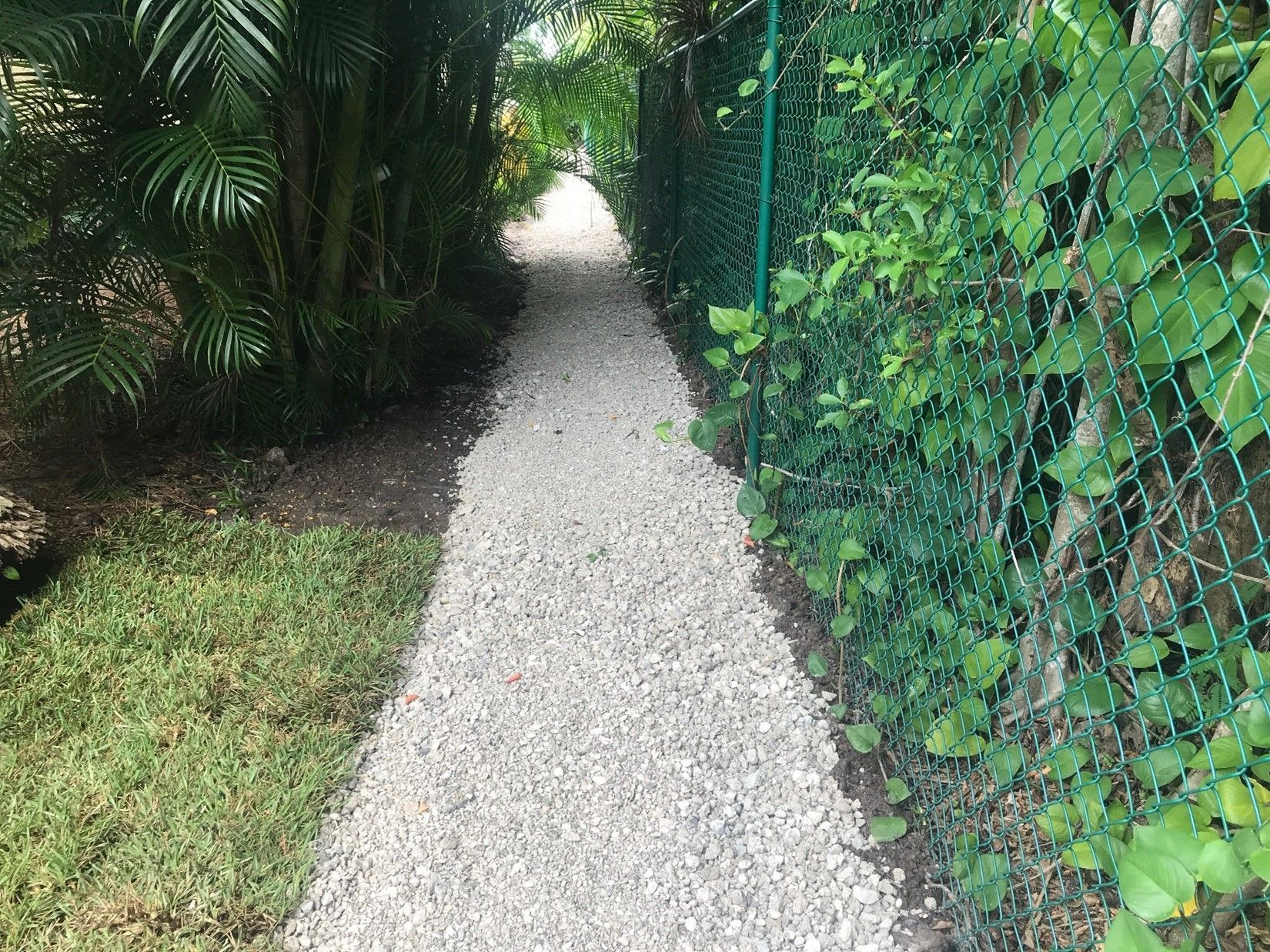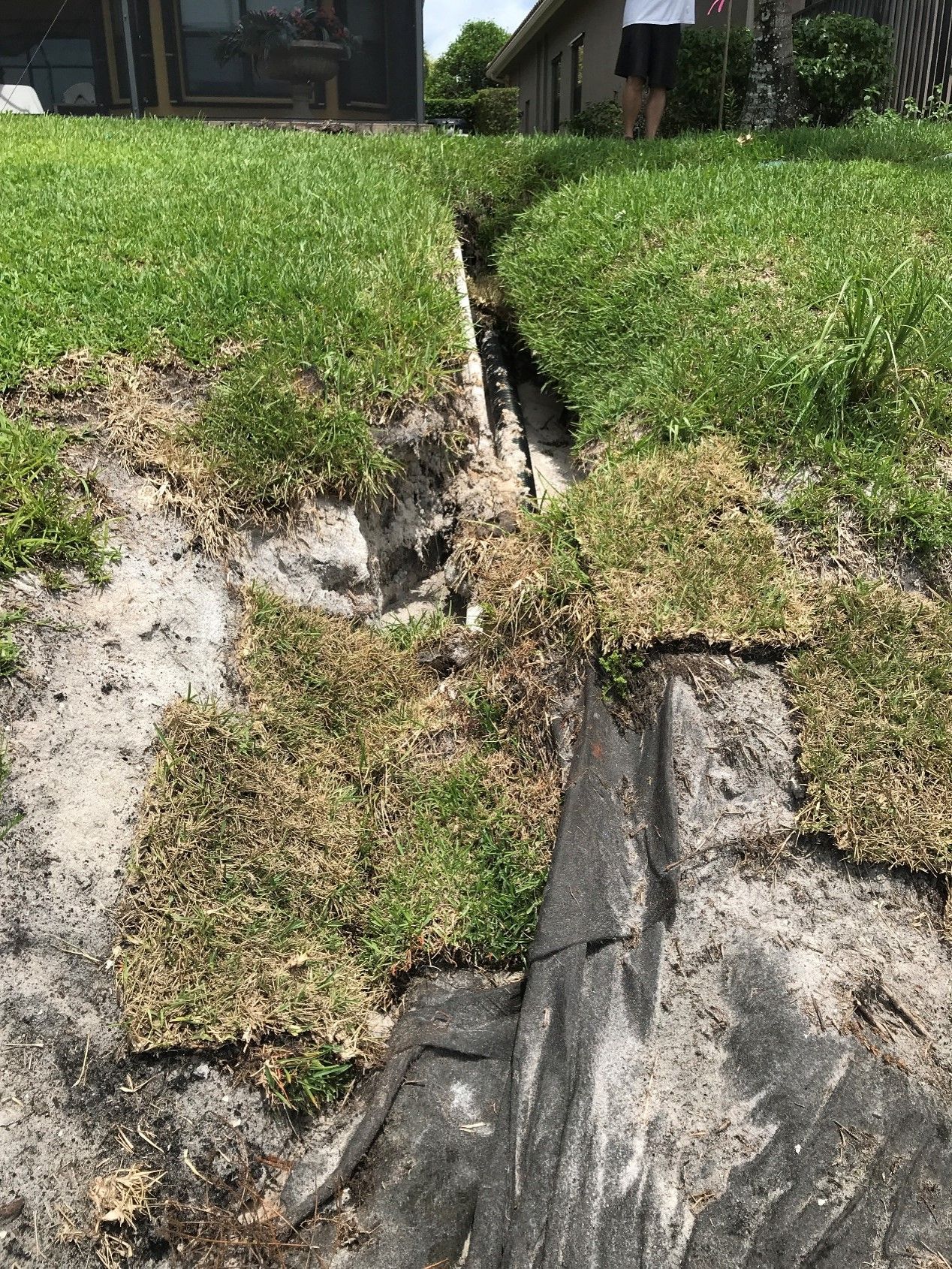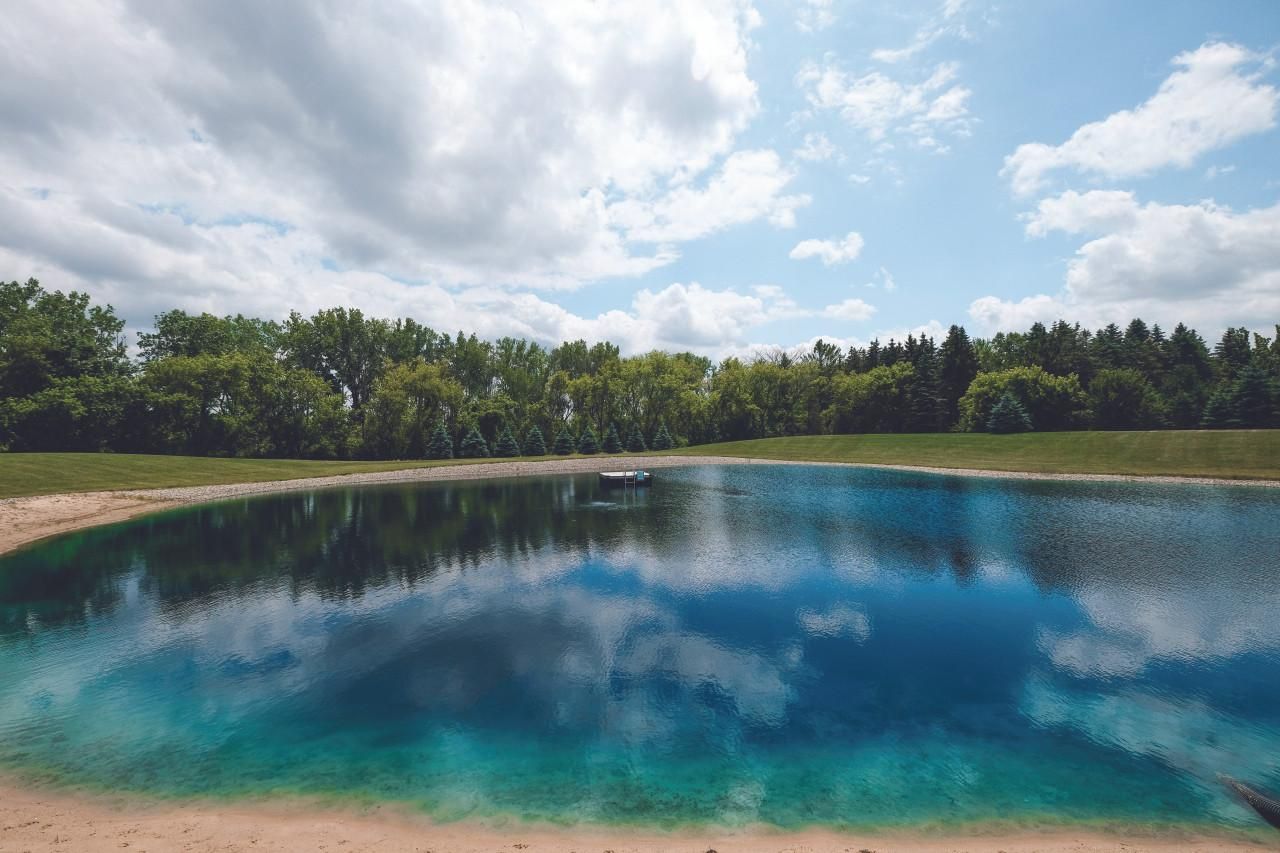Types of Lake, Pond, and River Erosion
The three primary types of lake, pond, and river erosion are Sheet Flow Erosion, Rill Erosion, and Splash Erosion. But erosion can also occur on horizontal areas such as landscaping, ditches, swales, berms, walls, and structures. The difference is whether the eroded land is part of a diagonal slope or a horizontal plane. Erosion in the landscape generally consists of berms and ditches losing their depth and consequently their efficacy. This can be remedied by cleaning out the eroded material, re-grading the area while ensuring a proper pitch for correct water flow and drainage, and securing the top of the land with sod or an aggregate.

Above Picture: Part of a 300 foot swale that was re-graded and filed with #57 stone to prevent further erosion.
Sheet Flow Erosion: Sheet erosion is a major process in the denudation of land surfaces. It involves the falling of raindrops and their merging to form a near-continuous sheet which moves down hillslopes, gathering momentum and representing an erosive force of high potential.1 In Florida, this type of erosion begins in the back yards of properties, builds up, and cascades down the shoreline bringing native soil along with it. The longer the back yard, the more water volume. This type of erosion is half of the reason escarpments develop on shorelines- the other half being the varying water levels of ponds and lakes due to rainy season versus dry season or the current that occurs on streams, rivers, and canals.
Rill Erosion: Rill erosion is the type of erosion that occurs as water flows over a hillslope and cuts shallow, curvy channels into the top soil. If the rills are not mended, with more water flow they can form gullies. Gully erosion is the erosion that causes deeper cuts into the soil and is more detrimental to the environment.2 Rill erosion in Florida is especially detrimental due to the fact that the topsoil that is used in construction has a high silica (sand) content. Additionally, our high annual rainfall collects between structures (such as homes) and becomes focused in one area, usually on a lot-line, as it reaches the shoreline. This concentrated area receives a high volume of water, creating a cavity in the shoreline. If left unchecked, this cavity becomes larger and larger with time and can eventually cause settling in structures, cracks in pool decks, or injuries to lawn care personnel!

Above Picture: Rill erosion eventually leads to large cavities, damage to irrigation piping, and failing sod.
Splash Erosion: Splash erosion or rain drop impact represents the first stage in the erosion process. Splash erosion results from the bombardment of the soil surface by rain drops. Rain drops behave as little bombs when falling on exposed or bare soil, displacing soil particles and destroying soil structure. Studies in the US have shown that splashed particles may rise as high as 1 foot above the ground and move up to 5 feet horizontally. Splash erosion results in the formation of surface crusts which reduce infiltration resulting in the start of runoff.3
There is also erosion that occurs on bodies of water here in south Florida that is caused by the rising and falling of water levels each year due to our very wet rainy season and fairly dry winters. This loosens the soil around the lake or pond bank and makes it susceptible to the three types of erosion above. If you would like to learn more about how erosion is affecting your property or community, please contact us.
References
1 Encyclopedia of Earth Science
2 Study.com
3 https://nre.tas.gov.au/
Recent Posts






